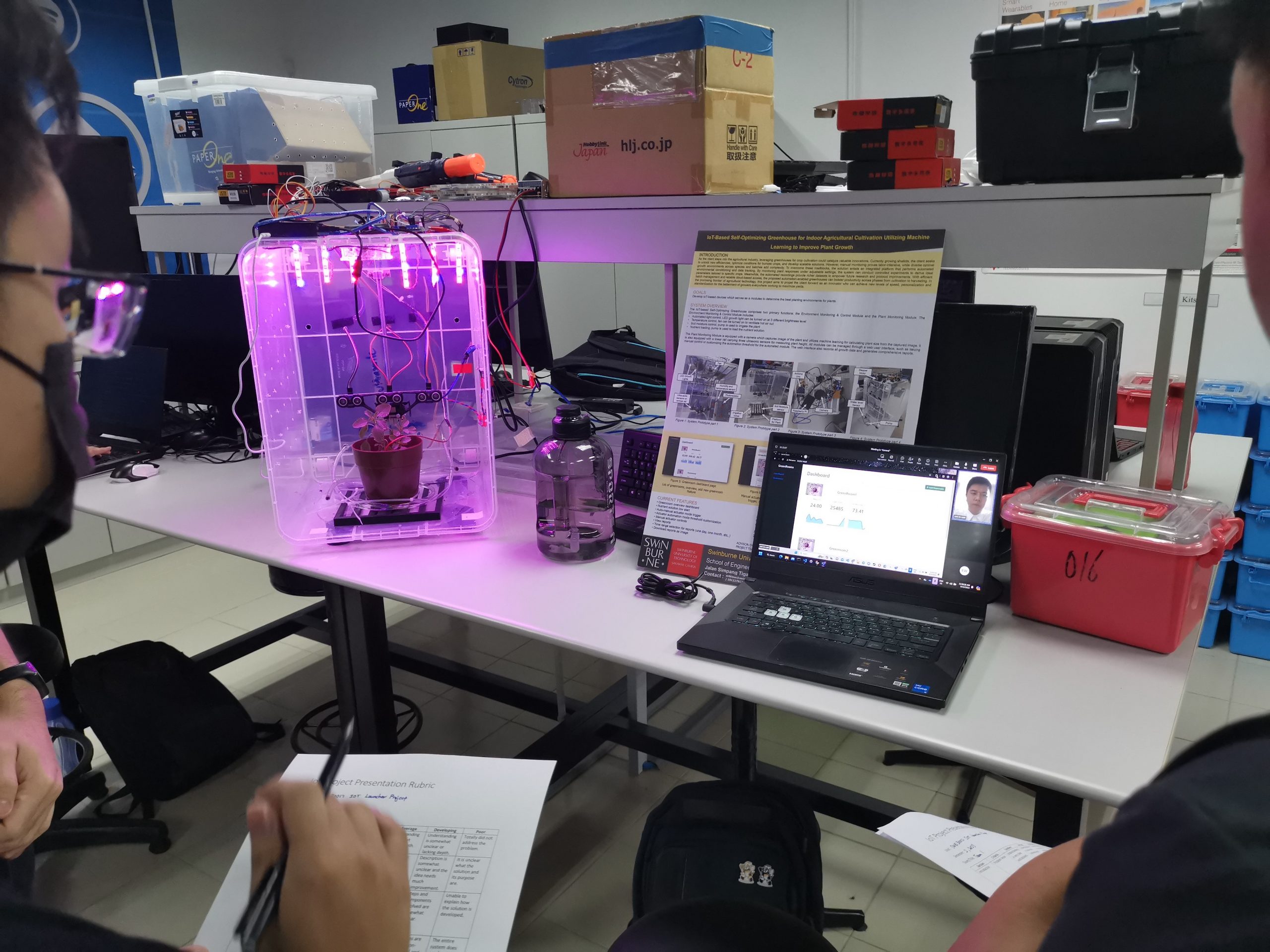With IoT, the world of tomorrow in popular culture is often depicted using settings such as a sprawling megacity, brimming with robots, hover cars, and people sporting cybernetic implants walking briskly through a utopian-dystopian day.

Swinburne Sarawak offers cutting-edge IoT education through its Bachelor of Computer Science IoT Major and Keysight certification
A Vision of Tomorrow
We see IoT everywhere. In shows like Bladerunner, The Matrix, Elysium, Psycho-Pass and Ghost in the Shell. Most notable is the action roleplaying PC game by CD Projekt Red in 2020 called Cyberpunk 2077 . It not only highlighted the possible conveniences and technologies of the future but also echoed those already around us now, in 2024.
Taking Cyberpunk 2077 as a case study, its Night City has a hi-tech taxi fleet of autonomous cars powered by an artificial intelligence (AI) named Delamain. Delamain is one of the characters in the game.
The protagonist talks with Delamain via implanted communicators, calling its services whenever and wherever needed. At multiple points in the story, the AI even saves the lives of its passengers by providing medical assistance through the vehicle’s equipment.
The groundwork for this technology already exists today.
E-hailing businesses such as Grab and Uber lay the commercial framework for online services that connect our smartphones to drivers. Uber alone had 150 million active global users in 2023 while Grab commands 180 million across Southeast Asia.
Autonomous Vehicles (AV) are currently being pushed beyond the state-of-the-art. Waymo, Cruise and Tesla are leading the charge towards the Society of Automotive Engineers (SAE) Level 4 designation – indicating the ability of a car to perform navigation, road manoeuvres and obstacle avoidance almost fully without human intervention. Waymo and Cruise already offer fully autonomous e-hailing within U.S. cities.
At the same time, Artificial General Intelligence (AGI) is now heavily researched by OpenAI, Microsoft, Nvidia, and Google, aimed at developing general-purpose AI that understands human conversation, capable of problem-solving skills and growing over time.
IoT Now is Connecting Tomorrow’s Tech
The one key ingredient that unites all these technologies is the Internet-of-Things (IoT), bringing the world of Cyberpunk into our today.
IoT is an umbrella term describing a combination of technologies where many devices communicate across a global network (AKA the Internet). This characteristic allows the device to transcend its capabilities beyond the confines of its body.
For instance, your smartphone functions as a mobile telephone for making calls and texting messages to another phone. But through the Internet and its operating system, it can control your home (e.g. Amazon Echo, Apple HomeKit, Google Home), make purchases online (Shopee, and Lazada), and give you fitness advice by comparing your daily routine against other people’s activities across the globe (see Apple iWatch and Samsung Galaxy Fit3).
Connecting our devices wirelessly to the Internet is now easier than ever, with 5G up to 10Gbps bandwidth and less than 1ms latency. Thanks to StarLink by SpaceX and Alphabet’s Project Loon, we may soon see Internet coverage in almost every inch of the Earth.
The Future of Smart Tech and Its Challenges
You can observe other “Future Tech” all around you. For instance, smart self-checkout has been widely used by Uniqlo, Walmart and other similar chains since Amazon Go was introduced in 2016.
With this, you can drop your loaded basket on the counter and the system will automatically sense what items you want to purchase with your e-wallet. Unmanned Hotels are quickly becoming mainstream as shown by FlyZoo Hotel in China. Armed with your phone app, you can now check in and manage your stay with Henn-na Hotel (Japan), Buddy Hotel (Germany) and similar places.
If you fancy being ahead of the curve, it is now possible to preorder the Tesla Optimus humanoid robot assistant as early as 2025. This type of companion robot is armed with AGI to respond to your needs and requests, gradually growing in capabilities as long as it stays connected to its servers through the Internet.
You can equip your home with the future too, by adding individual smart gadgets like the RingAlarm (look at their TikTok videos) or give it an overall technological makeover using Samsung SmartThings or Apple HomeKit.
The immense power of IoT warrants equal attention to security, as it can be a launchpad for massive disasters such as the Pennsylvania Aliquippa Water Plant Attack in 2023 where hackers gained control over the net-connected logic controllers (PLCs) causing water supply disruptions. Within the same year, IoT healthcare devices like insulin pumps and defibrillators were remotely controlled, potentially inducing life-threatening conditions.
There is also the ever-present Mirai Botnet (2016) that recruits unsecured IoT devices like zombies to launch DDOS attacks worldwide.
In light of these challenges, it is crucial to prepare the next generation of professionals to address IoT security concerns.
Swinburne University of Technology Sarawak is dedicated to training next-generation IoT specialists through its Bachelor of Computer Science IoT Major and Keysight Fundamental IoT System Design and Validation certification. Its IoT4Community Project has been running IoT workshops for students and teachers since 2021 to raise awareness of this technology in collaboration with the Institute of Electrical and Electronics Engineers (IEEE).
Dr Mark Tee Kit Tsun is a Digital Learning Technologist and senior lecturer at the School of Information and Communication Technologies, Faculty of Engineering, Computing and Science. Mark is contactable at [email protected]

